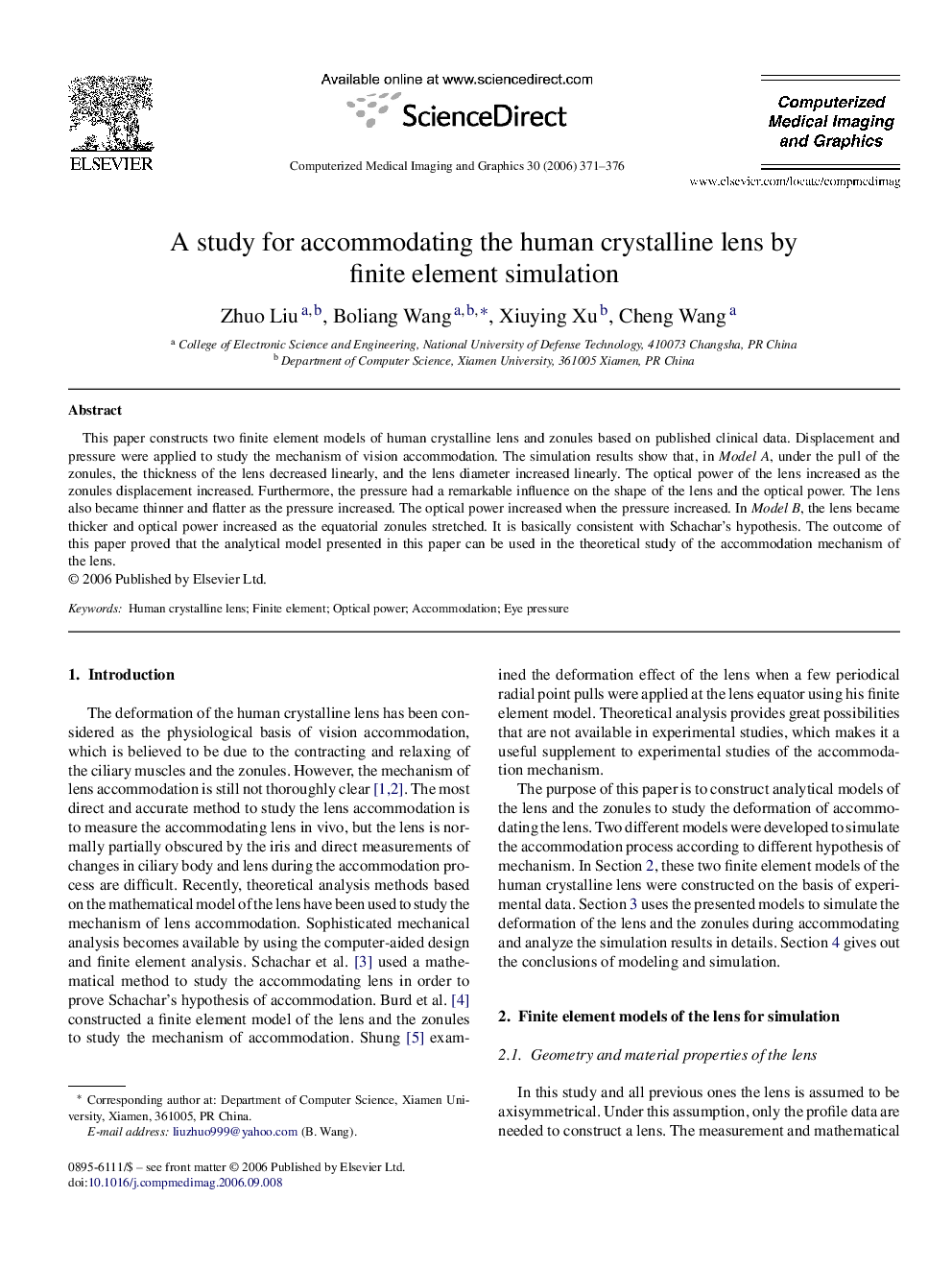| Article ID | Journal | Published Year | Pages | File Type |
|---|---|---|---|---|
| 504668 | Computerized Medical Imaging and Graphics | 2006 | 6 Pages |
This paper constructs two finite element models of human crystalline lens and zonules based on published clinical data. Displacement and pressure were applied to study the mechanism of vision accommodation. The simulation results show that, in Model A, under the pull of the zonules, the thickness of the lens decreased linearly, and the lens diameter increased linearly. The optical power of the lens increased as the zonules displacement increased. Furthermore, the pressure had a remarkable influence on the shape of the lens and the optical power. The lens also became thinner and flatter as the pressure increased. The optical power increased when the pressure increased. In Model B, the lens became thicker and optical power increased as the equatorial zonules stretched. It is basically consistent with Schachar's hypothesis. The outcome of this paper proved that the analytical model presented in this paper can be used in the theoretical study of the accommodation mechanism of the lens.
